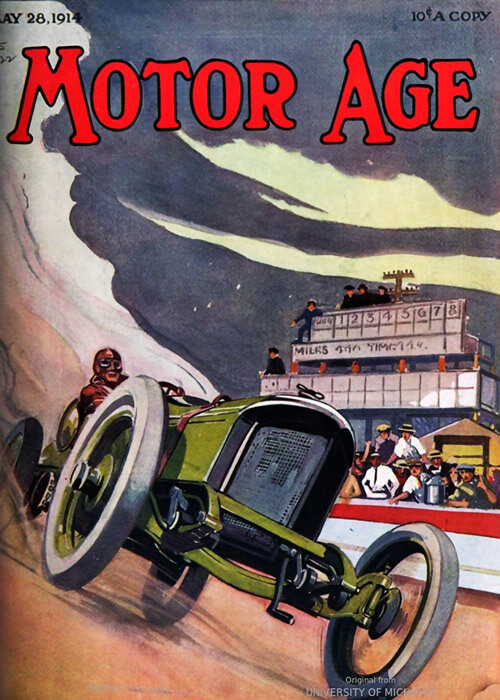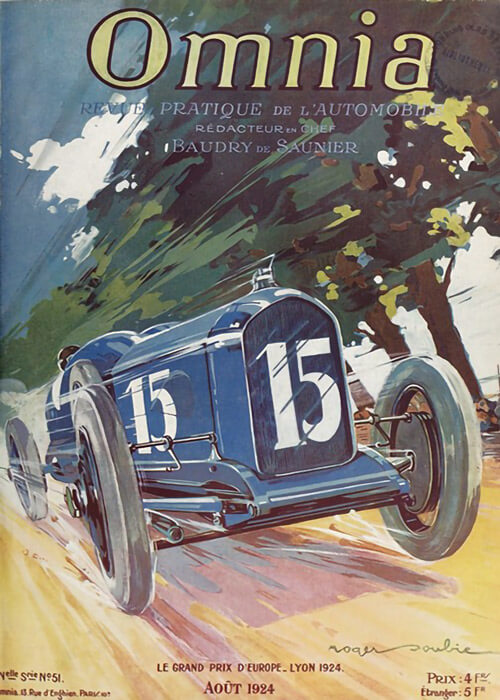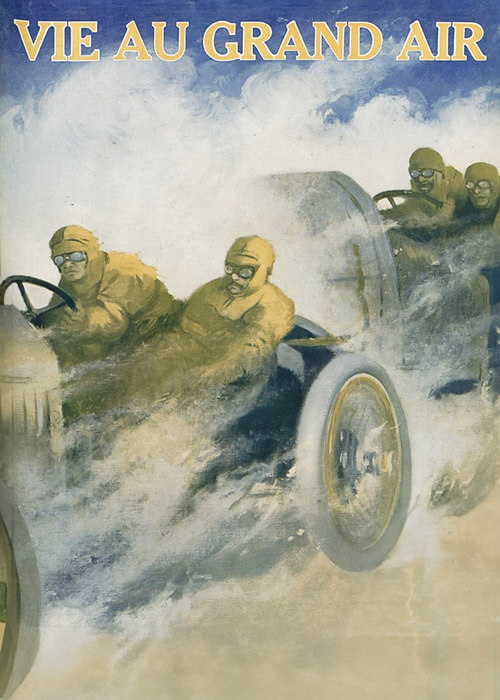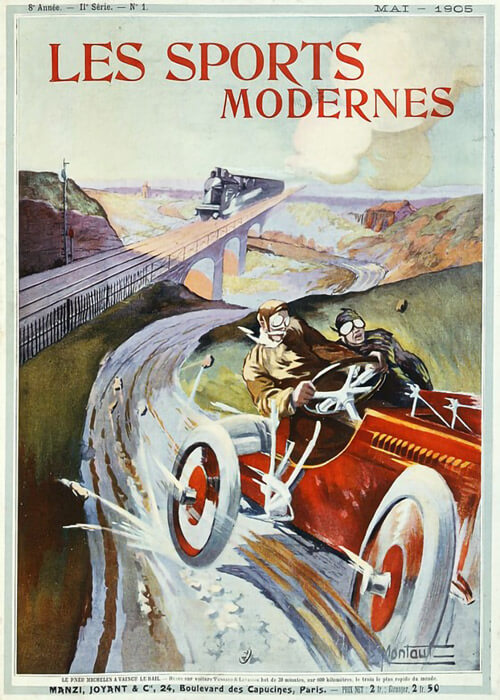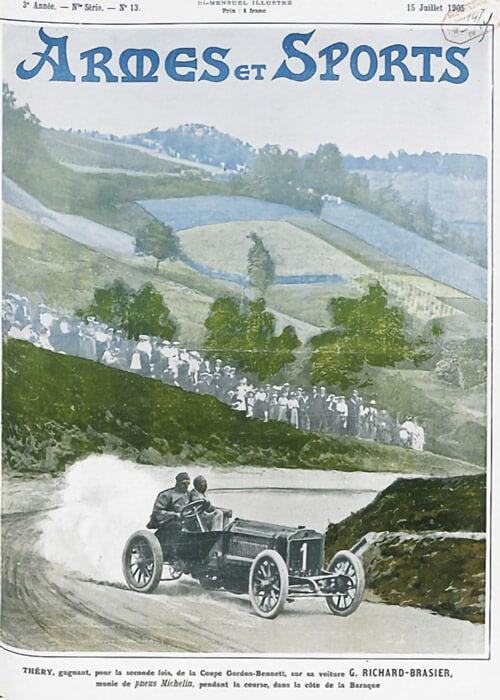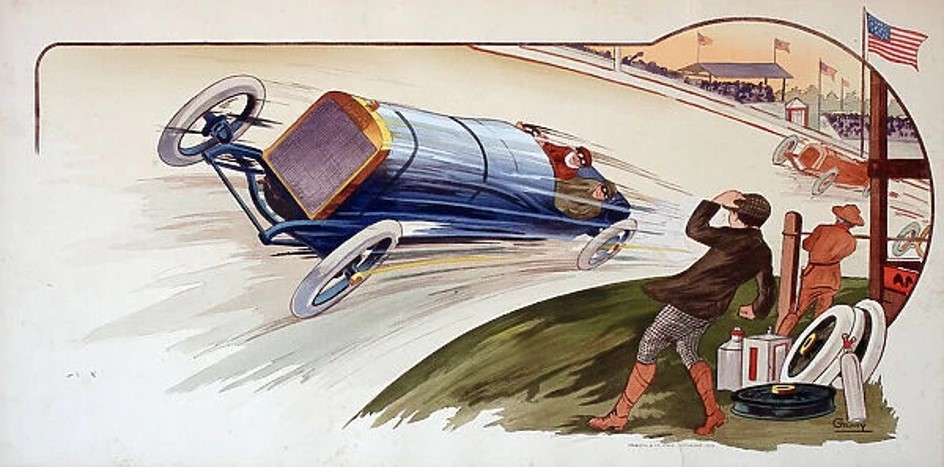Some general and in-depth considerations on behalf of motor racing and the Speedway, made diretly after the first ever Indianapolis Speedway races.
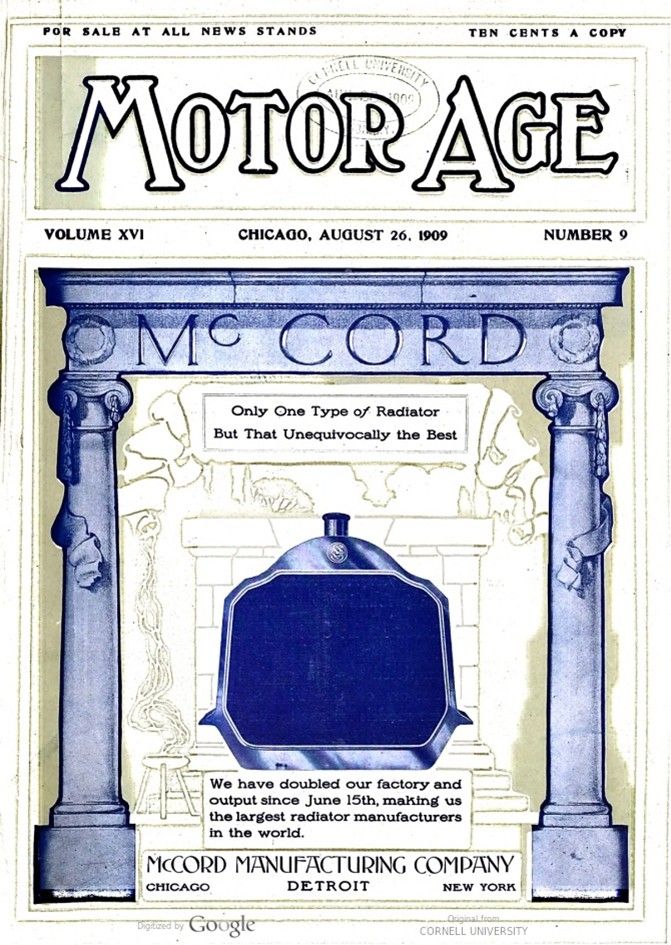

Text and jpegs by courtesy of hathitrust.org www.hathitrust.org, compiled by motorracinghistory.com
Motor Age Volume XVI, No. 9, August 26, 1909.
Published Weekly – The CLASS JOURNAL COMPANY – 1200 Michigan Avenue CHICAGO New York Office, 239 West 39th Street / Subscription Rates United States and Mexico, per year, $3.00. Other countries including Canada, $5.00
Entered as Second-Class Matter September 19,1899 at the Postoffice at Chicago, Illinois, under Act of March 3,1879
Suggestions and Criticisms of the Motor Speedway
THE Indianapolis motor speedway is a safe place for racing cars, if any road or beach course in America is safe for such sport. True, two lamentable fatalities marred the otherwise most successful opening of this American Brooklands, but these accidents might have happened on any straight roadway, because they both occurred on straightaways, where the track surface was the best, being as smooth and hard as possible. The National accident was due directly to a right front tire exploding on a straight stretch and at a time when the driver was hugging the outside of the track, so that when the car careened to the right there was not room enough to straighten it up before it collided with the outer fence. The track at this point is sixty feet wide. With the Borque case, something happened to the front end of the car, exactly what nobody knows, or ever will know, but the car turned towards the outside of the course, crossed a ditch eighteen inches deep, crossed over piles of loose dirt thrown out of the ditch, ran over huge tiles, to be used in the ditch, and finally upset. The ditch is dangerous it should have been filled before the race started-but even with the ditch filled, it is questionable if the car could have been controlled, because of the trouble which sent it to the outside of the course and at which time all control of it was lost.
**
BOTH the American Automobile Association and the Indianapolis motor speedway officials are responsible for the troubles, in that the races were too long. No driver in a track event should be allowed to drive for more than 100 miles. If races 300 miles in length are listed, then there should be a change of drivers every hundred miles. Every one of the drivers in the long races were tired before the races were half over. This was very apparent from the grand stand. On coming down the stretch up to the first ninety or hundred miles the drivers picked their courses with the utmost delicacy, avoiding whatever bad spots there were in the track, but once past the century point, turning the car to the right or left, to avoid such, seemed to call for too much effort, and the cars came tearing down over bad spots and bouncing drivers and mechanics in the air. The same was true in the back stretch and on the curves, where two cars bumped hubs at one time towards the end of the race, but neither shut off for an instant. The drivers, in fact, because of the trouble which sent it to the outside of the course that ordinarily would have caused shutting off momentarily.
**
BUT there is another cause which tired out the drivers before they started in the long races: It was the unpreparedness of the manufacturers. The majority of the cars were entirely overhauled each night, and the drivers in some cases were up more than half of the night looking over the work on their cars. Added to this was the trying-out they gave their machines during the forenoons of the race days. One driver drove his car sixty-two miles on the country road Saturday morning, in order to tune it up for the 300-mile race of the afternoon. This is too much exertion for any driver. But the preliminary work of the driver went further in some instances, as not a few of them drove in one or two of the five and ten-mile races which were run off before the start of the big event. All of this work for the driver before the race should be stopped by the manufacturer; the race promoter has no control over such.
**
THE impression seemed to prevail among many drivers that because the races were over a speedway course, without any right-angled turns, that it would be much easier on the driver than driving a road race, with numerous turns. This did not prove to be the case. On the speedway there was no letup to the pace set, and that constant, high-tension work showed its effect very quickly on both drivers and mechanics, as well as on the machines. In road races the majority of the drivers camp on the course for weeks before the event starts, in order to become familiar with the road peculiarities, and learn the speed at which to drive different turns, all of which is good training in endurance; but at Indianapolis this preliminary training was cut to a minimum, and the majority of the drivers went into the ordeal green as far as having brought their muscles up to the point of adequately meeting the required physical strain was concerned.
**
THERE are many ways in which the guarding of the course can be improved to increase the human safety factor, and there are not a few changes in the A. A. A. contest rules which will add to the safety percentage. In long-distance races the driver and mechanic should not be compelled to do any work on the cars at the repair pits. All changing of tires, filling with gasoline, oil and water, should be done by two of the pit attendants, so that the driver and mechanic, every time the car stops, have an opportunity to rest up, and get a drink or something to eat, if necessary. The present rules make it imperative for the driver and mechanic to do all the work, which is wrong, because both are tired, and often the heavy work of changing tires, or lifting big cans of gasoline, to pour the contents into the tank, is almost more than they can do.
**
AT the Indianapolis motor speedway spectators should not be allowed to stand in the paddock space in front of the grand stand. The grand stand is ideally located back almost 100 feet from the edge of the speedway track, but when spectators are allowed to fill this space and stand at the fence at the edge of the track, the danger line is passed, and such practices should be stopped. The repair pits in their present condition are dangerous, in that they are mere shells of wood and two by four- inch scantling, which, should a car go wrong on the home stretch, would not in any wise afford the slightest protection to those in them. These pits should be further back from the course, leaving a clear line of demarcation between the course proper and the side course in front of the pits. In front of the pits should be a cement wall or a stout timber wall of sufficient strength to glance off a car coming towards them. The private grand stands as at present located – close to the outside of the track at the first turn – are in a dangerous place should anything go wrong with the steering parts of a car at this point. If the stands were raised, the danger would be removed, but otherwise they would have to be shifted further back from the track. Where the track is not banked at the outside, as on the straight-aways, the outer fence should be moved twenty feet back from the edge of the course, as it is in some places now, thus leaving a wide, neutral zone on which a driver would have a chance to get control of his car if for any reason it ran off the course. At the inside of the track there is no fence much of the way, but where there is one it should be removed, if possible.
